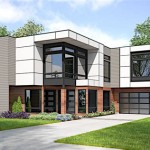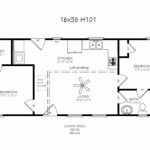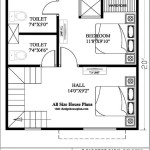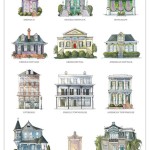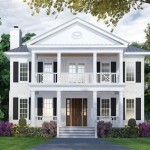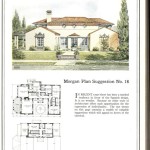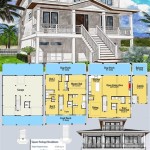Gothic Victorian Mansion Plans: A Study in Architectural Opulence and Design
Gothic Victorian mansion plans represent a fascinating intersection of two distinct architectural movements: the Gothic Revival and the Victorian era. This fusion resulted in structures characterized by intricate detailing, imposing scale, and a deliberate emphasis on historical precedent. These plans are not merely blueprints for residences; they are manifestations of wealth, social standing, and a cultivated appreciation for the artistry of the past.
The Gothic Revival, which gained momentum in the late 18th and early 19th centuries, sought to resurrect the architectural styles of the medieval period, particularly those associated with cathedrals and castles. Pointed arches, ribbed vaults, and elaborate ornamentation were key features of this movement. The Victorian era, spanning the reign of Queen Victoria from 1837 to 1901, was marked by rapid industrialization, social change, and an eclectic approach to architectural design. Victorian architecture embraced a wide range of styles, including Gothic Revival, Italianate, and Queen Anne, often combining elements from different periods and cultures. When these two movements converged, the result was the Gothic Victorian mansion: a grand and imposing residence that embodied both the romanticism of the Gothic past and the opulence of the Victorian present.
Understanding the nuances of Gothic Victorian mansion plans requires a careful examination of their key characteristics, the historical context in which they emerged, and the challenges involved in their design and construction. This article will delve into the distinct features of these plans, providing insights into their layout, ornamentation, and the enduring appeal they hold for architectural enthusiasts and historians.
Key Features of Gothic Victorian Mansion Plans
Gothic Victorian mansion plans exhibit several defining characteristics that distinguish them from other architectural styles. These features are not merely decorative; they are integral to the structural integrity and aesthetic appeal of the buildings.
Firstly, the use of verticality is paramount. High-pitched roofs, pointed arches, and soaring towers contribute to a sense of height and grandeur. This emphasis on vertical lines is a direct inheritance from Gothic cathedrals, which were designed to inspire awe and reverence. The verticality is often accentuated by the use of tall, narrow windows, often adorned with intricate tracery. These windows not only provide ample natural light but also serve as a visual link to the Gothic past.
Secondly, ornamentation plays a crucial role in Gothic Victorian mansion plans. Elaborate carvings, decorative moldings, and intricate tracery are used extensively to embellish both the exterior and interior of the buildings. Gargoyles, finials, and crenellations are common features on the exterior, while ornate plasterwork, richly carved woodwork, and stained-glass windows adorn the interior. The level of ornamentation is often indicative of the wealth and social status of the homeowner. The detailing extends to the landscaping, with meticulously manicured gardens and imposing gates contributing to the overall sense of grandeur.
Thirdly, asymmetry is a characteristic feature of Gothic Victorian mansion plans. Unlike the symmetrical facades of classical architecture, Gothic Victorian mansions tend to be more irregular in their layout. Towers, gables, and projecting wings create a dynamic and visually interesting composition. This asymmetry is not arbitrary; it is often dictated by the specific needs and desires of the homeowner. The irregular layout also allows for a greater variety of interior spaces, each with its own unique character and purpose.
The interior spaces of Gothic Victorian mansions are typically organized around a central hallway or staircase, which serves as the focal point of the house. Large, formal rooms, such as the drawing room and dining room, are designed for entertaining guests, while more intimate spaces, such as the library and study, provide a retreat for private contemplation. The layout of the house is also carefully considered to ensure that servants have access to all areas of the house without intruding on the privacy of the family. This often involves the inclusion of separate staircases and corridors for servants.
Materials used in the construction of Gothic Victorian mansions were typically of high quality and durable. Stone, brick, and wood were the most common building materials, often sourced locally. The use of these materials not only ensured the structural integrity of the buildings but also contributed to their aesthetic appeal. The exterior walls were often clad in stone or brick, while the interior walls were typically plastered and painted or wallpapered. Wood was used extensively for flooring, trim, and furniture.
Historical Context and Influences
The emergence of Gothic Victorian mansion plans was closely linked to the social, economic, and cultural changes that swept through England and America during the 19th century. The Industrial Revolution led to a dramatic increase in wealth, creating a new class of affluent industrialists and entrepreneurs who sought to display their success through grand and imposing residences.
The rise of Romanticism, a literary and artistic movement that emphasized emotion, imagination, and the beauty of the natural world, also played a significant role in the development of Gothic Victorian architecture. Romantic writers and artists often idealized the medieval period, portraying it as a time of chivalry, romance, and religious devotion. This romanticized view of the past inspired architects to incorporate Gothic elements into their designs, creating buildings that evoked a sense of nostalgia and historical grandeur.
Furthermore, the writings of influential architectural theorists, such as Augustus Pugin and John Ruskin, helped to promote the Gothic Revival movement. Pugin, a devout Catholic, argued that Gothic architecture was the only true Christian style, while Ruskin emphasized the importance of craftsmanship and the moral value of architecture. Their writings had a profound impact on architects and clients alike, shaping the way they thought about design and construction.
The influence of these historical and cultural factors can be seen in the specific features of Gothic Victorian mansion plans. The emphasis on verticality, ornamentation, and asymmetry reflects the romanticized view of the medieval period, while the use of high-quality materials and skilled craftsmanship reflects the Victorian emphasis on industry and innovation. The grand scale of the mansions reflects the wealth and social status of their owners, while the carefully planned interior spaces reflect the desire for comfort and convenience.
Across the Atlantic, the Gothic Revival style found a fertile ground in the United States. Figures like Andrew Jackson Downing adapted the European Gothic style for American tastes, emphasizing picturesque compositions and suitability for rural landscapes. These adaptations often incorporated local materials and vernacular building traditions, resulting in a distinctly American interpretation of Gothic Revival architecture.
Challenges in Designing and Constructing Gothic Victorian Mansions
Designing and constructing Gothic Victorian mansions presented a number of significant challenges for architects and builders. The intricate ornamentation, complex structural details, and high standards of craftsmanship required a great deal of skill and expertise.
One of the main challenges was the lack of readily available building materials. Stone, brick, and wood had to be sourced from distant locations, often transported by rail or ship. This added to the cost and complexity of the construction process. Skilled craftsmen, such as stonemasons, carpenters, and plasterers, were also in high demand, and their services were often expensive.
Another challenge was the complexity of the structural design. Gothic Victorian mansions often featured elaborate roof systems, towering spires, and intricate tracery, all of which required careful engineering to ensure their stability. Architects had to be knowledgeable in both traditional building techniques and modern engineering principles.
The interior design of Gothic Victorian mansions also presented its own set of challenges. The large, formal rooms required careful planning to ensure that they were both functional and aesthetically pleasing. The use of elaborate ornamentation, such as ornate plasterwork and stained-glass windows, required a high level of skill and craftsmanship. The integration of modern amenities, such as plumbing and electric lighting, also required careful planning and execution.
Furthermore, preserving and restoring existing Gothic Victorian mansions poses significant challenges. The age and complexity of these buildings often necessitate specialized knowledge and techniques. Identifying and sourcing historically accurate materials, repairing damaged ornamentation, and ensuring structural stability are all critical aspects of preservation work. The cost of these projects can be substantial, requiring significant investment and careful planning.
Despite these challenges, the enduring appeal of Gothic Victorian mansion plans is undeniable. Their grandeur, beauty, and historical significance continue to captivate architects, historians, and homeowners alike. These plans offer a glimpse into a bygone era, a time of opulence, romance, and architectural innovation.
The legacy of Gothic Victorian mansion plans extends beyond the physical structures themselves. They continue to inspire architects and designers today, influencing contemporary designs and shaping our understanding of architectural history. The principles of Gothic Revival and Victorian architecture, such as the emphasis on craftsmanship, ornamentation, and historical precedent, remain relevant in modern design.

Gothic Revival House Plans

Gothic Victorian Home Plan With Optional Lower Level Apartment 2195 Sq Ft 81786ab Architectural Designs House Plans

Gothic Mansion Design Plans From The 1800s Front Elevation And Entrance

Gothic Mansion Floor Plans Ayanahouse Plan Monster House

Pin Page

Pin Page
Victorian House Plan 4 Bedrms 3 5 Baths 3875 Sq Ft 137 1481

House Plan 98568 Victorian Style With 3017 Sq Ft 4 Bed 3 Bath

50 Victorian American Architecture House Designs Plans With S 100 Printable Pages Or Read On Your Tablet Computer Instant Denmark

Archi Maps Photo
Related Posts

